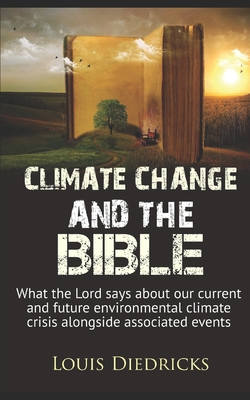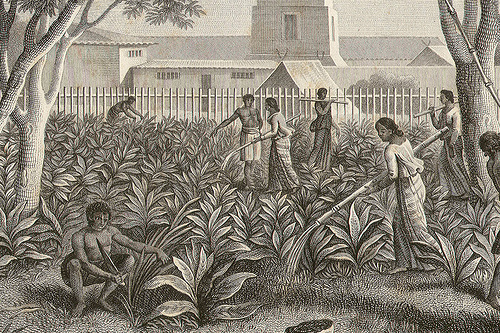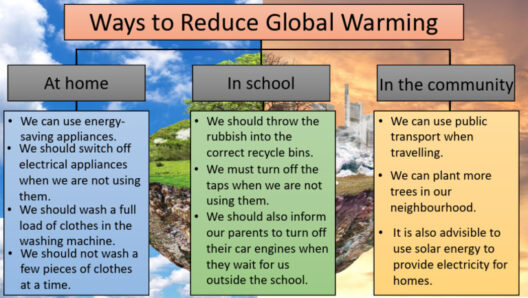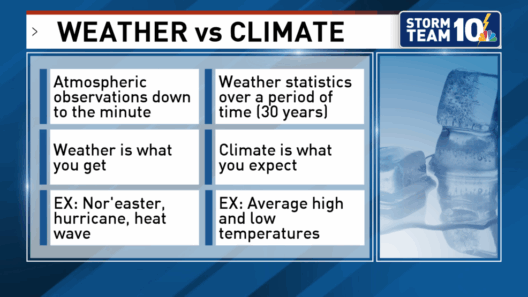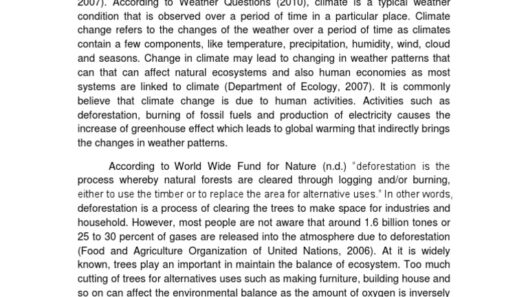The question of whether climate change is addressed within the Bible invites a profound examination of scriptural texts in the context of contemporary environmental dilemmas. While the Bible may not explicitly mention climate change as we understand it today, it provides a rich tapestry of principles and narratives that resonate with the urgency of our current ecological crisis. The intertwining of spiritual wisdom and environmental stewardship in scripture culminates in unique insights, portraying humanity’s intricate relationship with the Earth.
To embark upon this exploration, one must delve into the foundational narratives found in the book of Genesis. The depiction of creation paints a vivid picture of the cosmos as a harmonious entity, where each element plays a critical role in the delicate balance of life. The refrain, “And God saw that it was good,” encapsulates not only divine approval but perhaps a mandate for humanity: to protect and cherish the intricate systems that sustain life. This initial portrayal of Earth sets the stage for understanding the moral imperative embedded within biblical texts—the call to be stewards rather than exploiters of the environment.
As the narrative unfolds, the concept of stewardship emerges prominently. The Garden of Eden is not merely a paradise constructed for pleasure; it symbolizes the divine purpose of nurturing the Earth. Adam and Eve are not framed as passive inhabitants but as custodians, entrusted with the care of creation. This idea of stewardship beckons a direct response to the environmental crises we face today. The degradation of our planet due to pollution, deforestation, and climate change stands in stark contrast to this ancient imperative. Consequently, biblical stewardship transcends antiquity, resonating powerfully with modern environmentalism.
Moreover, the scriptural texts brim with warnings against hubris and avarice. The story of Noah’s Ark serves as a poignant metaphor for ecological responsibility. When humanity’s depravity and disregard for creation reached an apogee, divine response manifested in an apocalyptic flood—a decision irrevocably altering the course of life on Earth. This narrative can be interpreted as a cautionary tale regarding the repercussions of neglecting the natural world. It serves as a reminder that the Earth itself has its limits, and when those limits are transgressed, consequences ensue. The deluge is not just a historical reference; it is an archetype reflecting our modern reality, urging us to hold ourselves accountable for our environmental transgressions.
This discourse on climate change is illuminated further through prophetic literature, which often delineates the consequences of societal immorality. The prophets, such as Isaiah and Jeremiah, frequently lament the exploitation of the land and the resultant suffering that ensues. Their visceral imagery serves as both a warning and an exhortation—encouraging repentance and reverence for creation. The resonance of these prophetic admonitions invites contemporary believers to consider the societal inequalities exacerbated by environmental degradation, reminding us that the poorest communities often bear the brunt of ecological disasters. This spiritual insight advocates for a holistic approach to climate justice, intertwining ethical living with ecological awareness.
As one turns the pages of biblical texts, there emerges a recurring theme of renewal and redemption, offering hope amidst despair. The concept of re-creation infiltrates scripture; the promise of a new earth is articulated in both the Old and New Testaments. This eschatological vision imbues humanity with a sense of purpose: the call to participate in the divine work of restoration. The agricultural imagery employed in parables underscores the cyclical nature of life, inviting humans to nurture the Earth in anticipation of healing and renewal. Such visions act as beacons of hope, urging society to engage actively in the reclamation of degraded lands and ecosystems.
Furthermore, communal responsibility is woven throughout the biblical narrative, emphasizing the interconnectedness of all creation. The call to “Love thy neighbor” extends beyond human relationships, embracing the entirety of the created order. Environmental degradation is not an isolated incident; it affects every creature, every plant, every drop of water. Thus, the biblical call to love manifests in tangible actions aimed at protecting and preserving the natural world. It is a holistic love, demanding that one not only cares for humanity but also respects and nurtures the Earth’s intrinsic value.
Institutional responses to climate change must thus be informed by these spiritual insights. Faith communities have the potential to galvanize action and inspire collective responsibility. By framing environmentalism through a theological lens, congregations can mobilize individuals toward advocacy and activism. The intersection of spirituality and ecology can lead to innovative solutions that honor both divine creation and scientific understanding, engendering a renewed commitment to sustainability.
In summation, while the Bible may not delineate climate change explicitly, its texts are rich with implications that speak profoundly to the modern crisis. The inherent connection between humanity and creation calls for a reinterpretation of stewardship that transcends mere caretaking; it commands reverence, responsibility, and action. Through parables, narratives, and prophetic voices, spiritual insights gleaned from the scriptures emerge as vital catalysts for confronting environmental issues. The call to care for the Earth is not merely an environmental mandate but a spiritual obligation that invites all individuals, communities, and nations to unite in the sacred endeavor of protecting our shared home in the face of climate turmoil.



